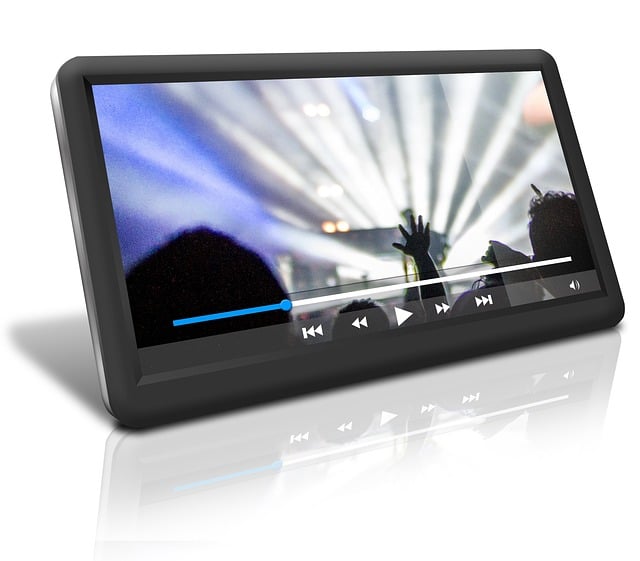Converting DivX to MP4 is a strategic move for video owners seeking universal compatibility, as MP4 is the current industry standard with wide device and platform support. This process enhances accessibility, enabling seamless sharing via email, cloud storage, or directly to modern devices like smartphones and smart TVs. Choosing user-friendly, high-quality conversion tools with efficient processing and support for various file types ensures optimal playback across streaming platforms. The simple conversion process involves downloading software, importing files, selecting MP4 output, and clicking "Convert," resulting in a new MP4 file ready for sharing via social media or cloud services.
Looking to seamlessly share videos across diverse platforms? This comprehensive guide explores converting DivX to MP4, a versatile format ideal for cross-platform compatibility. We’ll demystify file formats, delve into the benefits of conversion, and provide a step-by-step process. Learn best practices for efficient file sharing while troubleshooting common issues. By the end, you’ll be an expert in transforming DivX to MP4 for effortless multimedia distribution.
Understanding File Formats: DivX and MP4 Explained

DivX and MP4 are two common video file formats that play a significant role in media sharing across different platforms. Understanding these formats is crucial when it comes to seamless content exchange, especially when converting DivX to MP4. DivX (short for Division X) was an early video compression standard known for its high-quality encoding while keeping file sizes relatively small. It was particularly popular in the early 2000s before being largely superseded by MP4.
MP4, or MPEG-4 Part 14, is a modern container format that supports a wide range of video and audio codecs. It has become the industry standard for media distribution due to its versatility, compatibility with numerous devices and platforms, and efficient compression capabilities. When converting DivX to MP4, users can take advantage of this widespread format to ensure their files are accessible and playable on virtually any device or streaming platform.
Why Convert DivX to MP4? Benefits for Cross-Platform Compatibility

Converting DivX to MP4 offers significant advantages for sharing files across diverse platforms. DivX, while a powerful video compression format, has limited compatibility with modern devices and software. Many newer applications and operating systems default to MP4 as a standard video container due to its universal support.
By converting DivX to MP4, users ensure their videos can be seamlessly played on virtually any device or platform. MP4’s versatility allows for easy sharing via email, cloud storage services, or direct transfer to smartphones, tablets, and smart TVs. This compatibility advantage makes the conversion process a vital step in maximizing the accessibility of your video content.
Choosing the Right Conversion Tools

When sharing files across platforms, selecting the appropriate conversion tools is key to ensuring compatibility and optimal playback. For instance, converting DivX to MP4 can be a smart choice due to MP4’s universal support across devices and streaming platforms. This process involves specialized software that decodes the DivX video format and re-encodes it into MP4, preserving quality while adapting to various systems.
The right conversion tool should offer seamless interfaces, high-quality output, and efficient processing. It must handle not just DivX to MP4 conversions, but also other file type transformations to cater to diverse user needs. Furthermore, cloud-based solutions can enhance accessibility, allowing users to convert files from anywhere without installing software.
Step-by-Step Guide: Converting DivX to MP4 with Ease

Converting DivX to MP4 is a straightforward process that allows for seamless file sharing across various platforms. Here’s a step-by-step guide to help you make this transition effortlessly. First, download and install a reliable video converter tool that supports DivX input and MP4 output. There are numerous options available, both free and paid, catering to different needs and preferences. Once installed, open the software and import your DivX file by clicking on “Add” or a similar option.
Next, choose “MP4” from the list of available formats as your desired output. Adjust any settings according to your requirements, such as resolution or bitrate. Then, click on the “Convert” button to begin the process. Depending on the size and complexity of your file, the conversion may take a few minutes. After completion, locate the converted MP4 file in the specified folder and you’re ready to share it across any platform, from social media to cloud storage services.
Common Issues and Troubleshooting Tips

When sharing files across different platforms, users often encounter common issues, especially with video formats like DivX. One frequent problem is compatibility; not all devices or software applications support every video codec, leading to playback difficulties. For instance, trying to play a DivX file on a newer smartphone or tablet might result in an error message due to the device’s limited or absent support for this format.
Troubleshooting tips include converting your files to a widely compatible format like MP4 using online converters or dedicated software. This process transcodes the video, ensuring it plays seamlessly across various platforms and devices. Another tip is to ensure you’re using the correct file sharing platform that supports your desired video format. Some services excel at handling specific codecs, while others might not, requiring an additional conversion step before sharing.
Best Practices for Seamless File Sharing Across Platforms

When sharing files across different platforms, adhering to best practices ensures a seamless and efficient experience for all users involved. One of the most common challenges is ensuring compatibility, especially when dealing with various video formats like DivX. Converting DivX to MP4 is a widely adopted strategy to overcome this hurdle. MP4, being a versatile format, is supported by almost every device and platform, making it the ideal choice for universal file sharing.
Additionally, compressing files appropriately without significantly impacting quality is crucial. Optimizing video resolution and bitrate according to the intended platform’s capabilities ensures smooth playback and reduces upload times. Users should also consider adding metadata, such as detailed descriptions and tags, to facilitate easier organization and search when receiving shared files.
Converting DivX to MP4 is a smart move for ensuring seamless file sharing across diverse platforms. By understanding file formats, recognizing the benefits of conversion, and utilizing reliable tools, you can easily overcome compatibility challenges. Following our step-by-step guide and best practices, you’ll be well-equipped to share high-quality media files with friends, family, or colleagues, regardless of their device or platform preferences.
